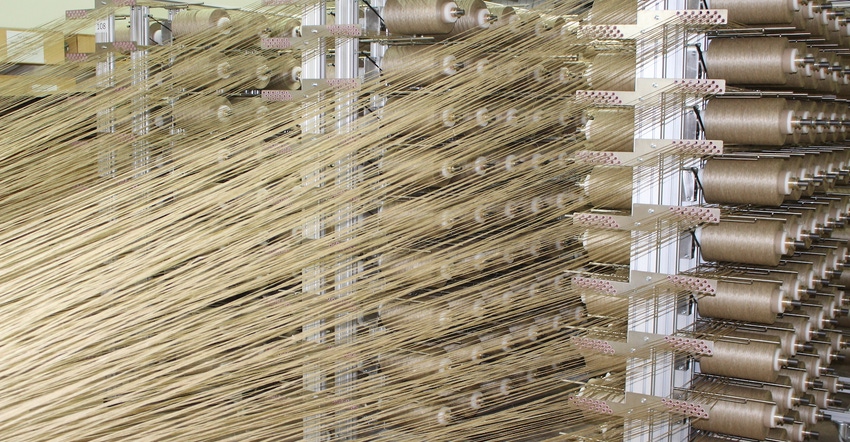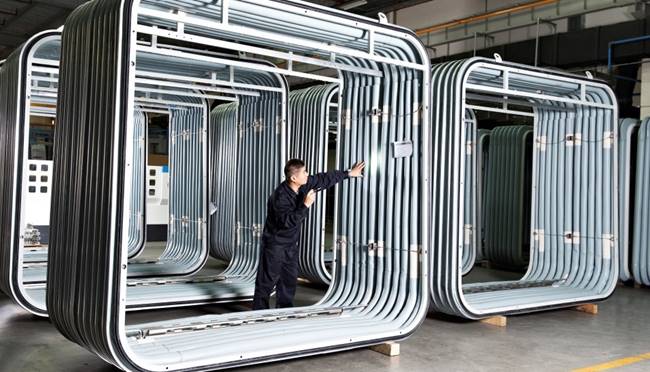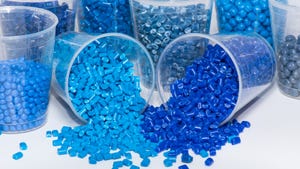Interdisciplinary research team seeks to develop thermoformable thermoplastic composites using renewable bast fibers as reinforcement.
July 15, 2022

Germany’s government-funded DuroBast project is focused on the use of bast fibers for the production of composite structural components. The project aims to develop thermoformable thermoplastic composites employing renewable bast fibers as reinforcements for a range of applications in automotive and sports equipment. Initial research work has focused on composite components such as bus bellows, center consoles, and snowboards.
Native bast plants such as flax, hemp, and nettle have been used for fiber production for centuries. Their fibers are characterized by an array of properties and are suitable for the manufacture of a variety of products. Besides clothing, these fibers historically were used for technical applications such as sacks, sails, ropes, and nets. Today, their lightweight construction potential makes bast fibers an interesting material alternative in the development of fuel-efficient cars and electro-mobile solutions. Another advantage of flax and hemp is their low tendency to splinter, a positive attribute especially in traffic accidents.
|
Bast fiber–based composites have been trialed in bus bellows manufactured by Hübner. |
Under the leadership of the Fraunhofer Institute for Structural Durability and System Reliability LBF, an interdisciplinary research consortium with 11 partners from science and industry, is working on the development of innovative bio-based materials. Members of the consortium are linking their expertise in all areas of the value chain and aim to transfer project results to concrete applications such as automotive interiors (door panels), sports equipment (snowboards), and public transport (bus bellows) in the near future.
The project partners are Dräxlmaier GmbH & Co. KG, Gustav Gerster GmbH & Co. KG, Hübner GmbH & Co. KG, Institute for Textile Technology RWTH Aachen, Leibniz Institute for Composite Materials GmbH, nova-Institut für politische und ökologische Innovation GmbH, Rhenoflex GmbH, silbaerg GmbH, Wagenfelder Spinnereien GmbH and the Chair of Materials Test Engineering (WPT) of TU Dortmund University.
Convincing strength, improved moisture resistance
Due to their high moisture absorption, bast fibers have only been used to a limited extent in plastics and durable applications. Therefore, one of the innovation goals of the DuroBast project is to reduce the moisture absorption of the fibers through modification and then process them into yarns, nonwovens, and fabrics. To this end, the fibers will undergo pre-treatment. Specifically, fiber cavities and inter-fiber spaces will be filled with a thermoplastic that prevents water absorption even in damaged areas and cut edges of the composites. With this objective in mind, the team is examining and comparing the properties of various bast fibers, different processes, and the mode of action of different hydrophobic agents.
To achieve 100 % bio-based material combinations in the long term, the research team is also striving to use a bio-based polymer matrix. The process should subsequently enable improved bonding of the matrix to the natural fiber component. Here, the yarns, nonwovens, and fabrics obtained from the fibers must meet the requirements of the intended end applications. Identifying the optimal fiber length, denier, purity, and strength; spinning method; and degree of fiber roasting are proving to be a challenge in this context. All selected components also must fulfil the target criteria of processability, economic efficiency, availability, and sustainability.
The advantages of hemp
In addition to flax, initial investigations have confirmed the advantages of the hemp plant. Its climatic requirements allow cultivation in Germany and, thus, offer supply security in times of an uncertain global logistics situation. Hemp’s price is also favorable versus flax fibers, and the entire plant can be utilized in medical and food applications, such as hemp seeds. Hemp is also environmentally advantageous with its ability to concentrate large quantities of CO2 during cultivation. In fiber-reinforced plastics, hemp can reduce the proportion of fossil plastic components by replacing them with renewable alternatives.
Initial tests on the production of hemp-polypropylene organic sheets delivered promising results. These fiber-reinforced thermoplastics exhibit strength and low density and are just as easy to process as conventional sheet metal components. The research team intends to comprehensively test further material combinations and processes in the following months.
About the Author(s)
You May Also Like





